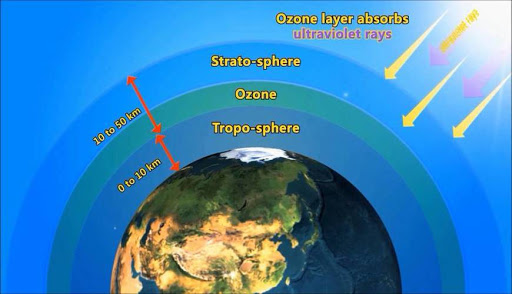Why in news?
Last week, the European Union’s Copernicus Atmosphere Monitoring Service (CAMS) announced that a hole in the Arctic ozone layer, believed to be the biggest reported, has closed.
Why did it close?
The ozone hole’s closing was because of a phenomenon called the polar vortex, and NOT because of reduced pollution levels due to COVID-19 lockdowns around the world, reports said.
Importance of Ozone Layer
- Ozone (chemically, a molecule of three oxygen atoms) is found mainly in the upper atmosphere, an area called the stratosphere, between 10 and 50 km from the earth’s surface.
- By absorbing the harmful ultraviolet radiations from the sun, the ozone molecules eliminate a big threat to life forms on earth. UV rays can cause skin cancer and other diseases and deformities in plants and animals.

What are Ozone Holes?
- The ‘ozone hole’ is not really a hole — it refers to a region in the stratosphere where the concentration of ozone becomes extremely low in certain months.
- The ‘ozone holes’ most commonly talked about are the depletions over Antarctica, forming each year in the months of September, October and November, due to a set of special meteorological and chemical conditions that arise at the South Pole, and can reach sizes of around 20 to 25 million sq km.
- Such holes are also spotted over the North Pole, but owing to warmer temperatures than the South Pole, the depletions here are much smaller in size.
Why this year’s Arctic ozone hole was massive?
- This year, the ozone depletion over the Arctic was much larger. Scientists believe that unusual atmospheric conditions, including freezing temperatures in the stratosphere, were responsible.
- Cold temperatures (below -80°C), sunlight, wind fields and substances such as chlorofluorocarbons (CFCs) were responsible for the degradation of the Arctic ozone layer.
Ozone recovery
- As per the Scientific Assessment of Ozone Depletion data of 2018, the ozone layer in parts of the stratosphere has recovered at a rate of 1-3 per cent per decade since 2000.
- At these projected rates, the Northern Hemisphere and mid-latitude ozone is predicted to recover by around 2030, followed by the Southern Hemisphere around 2050, and polar regions by 2060.




